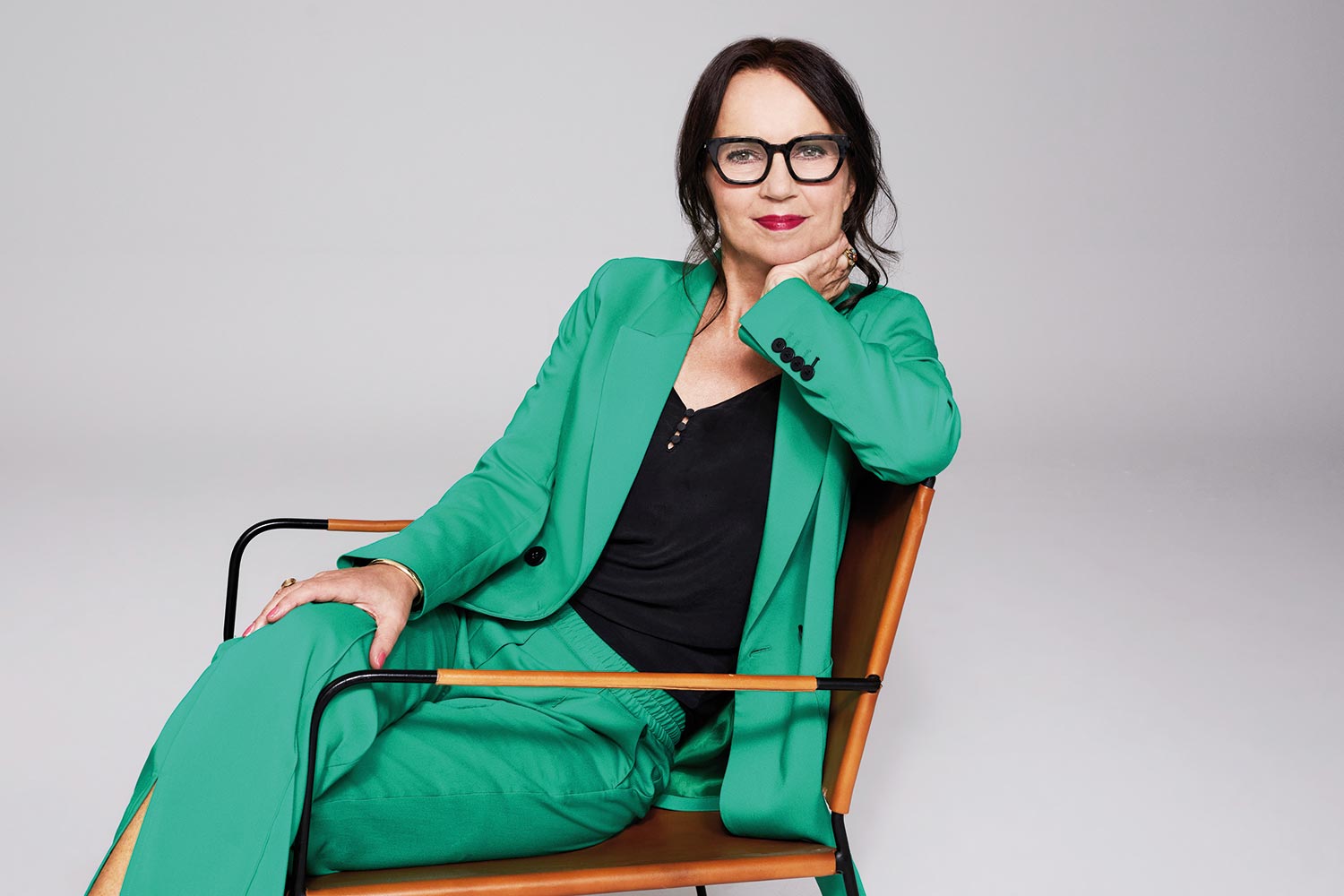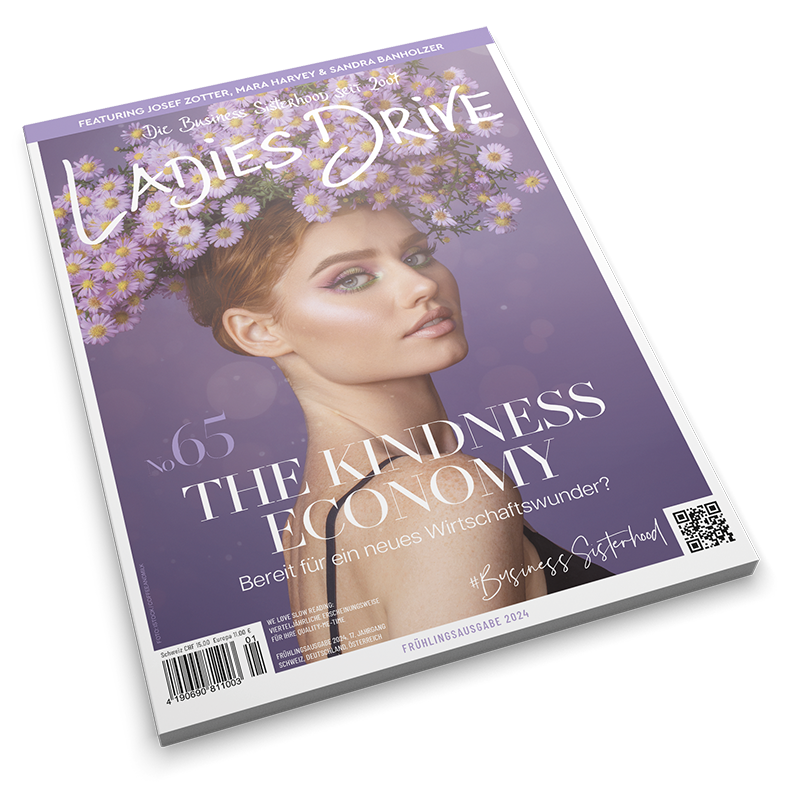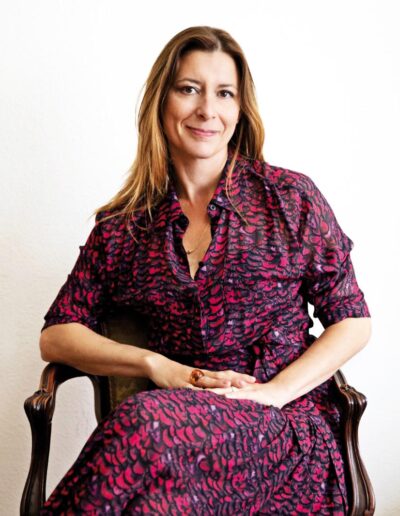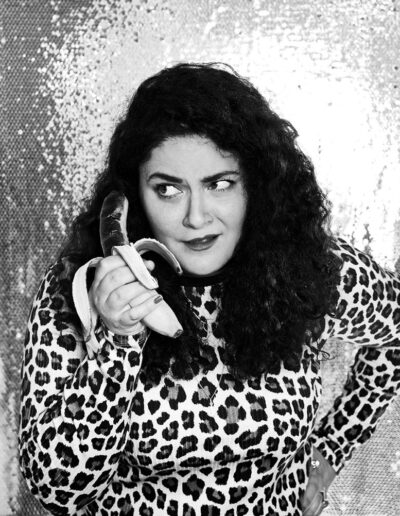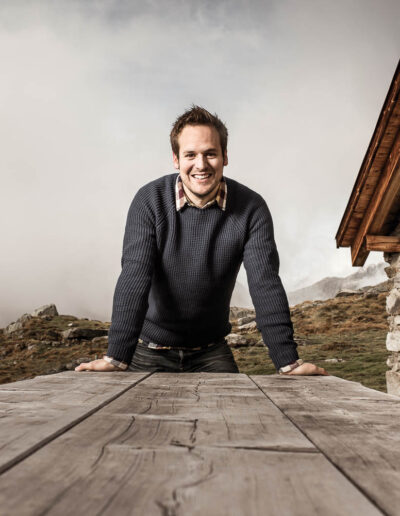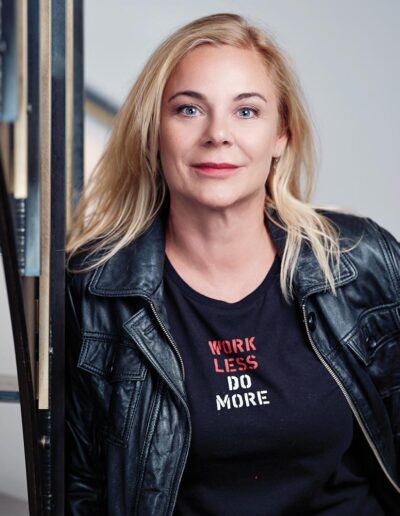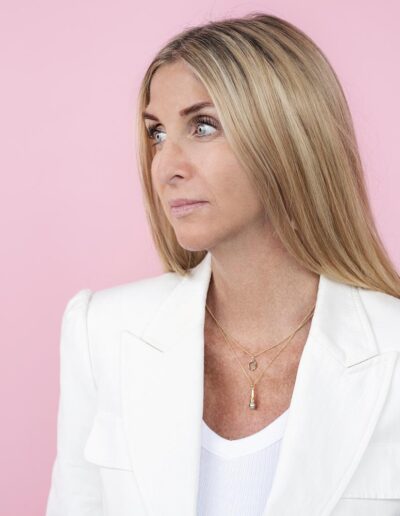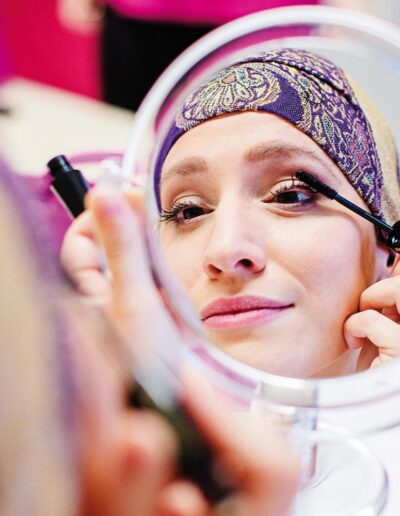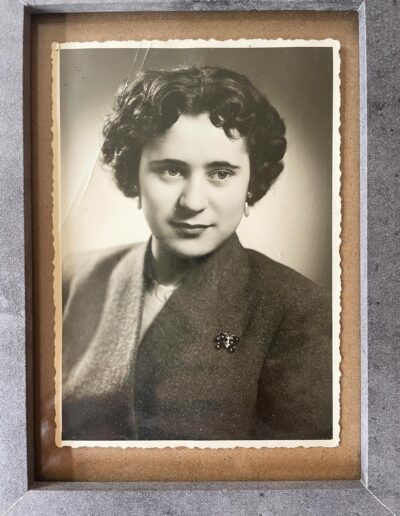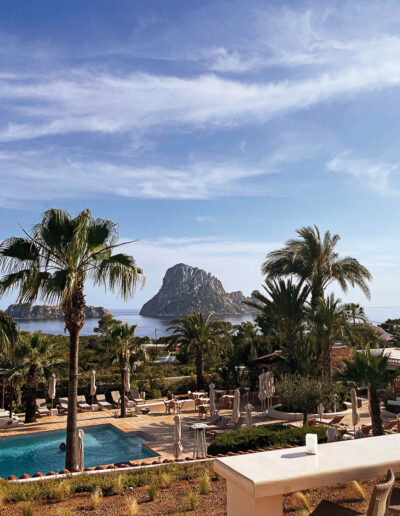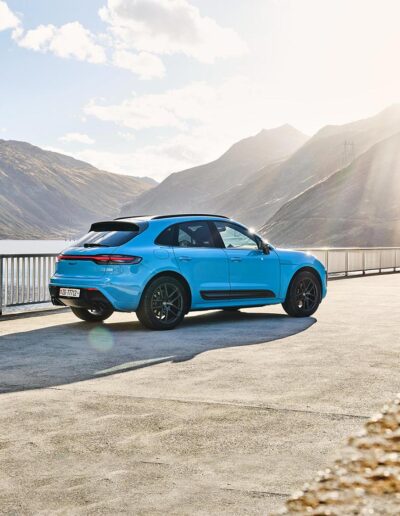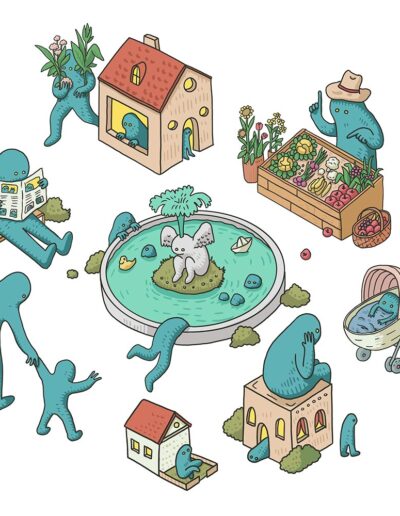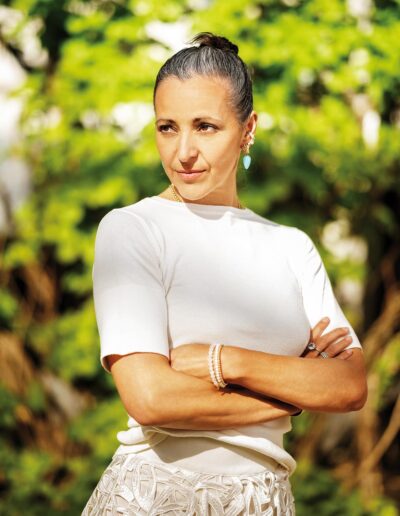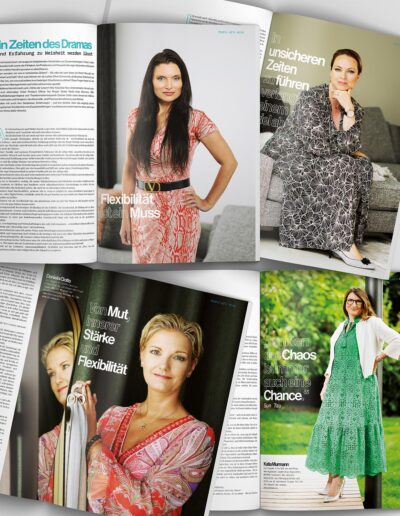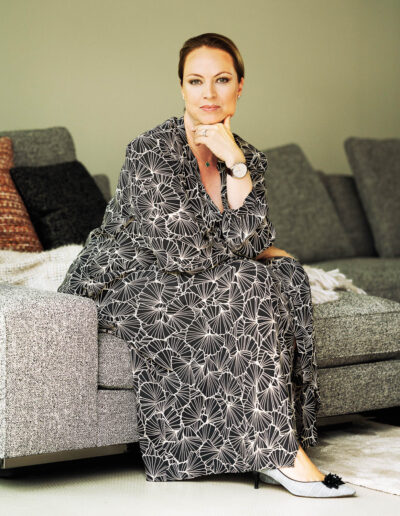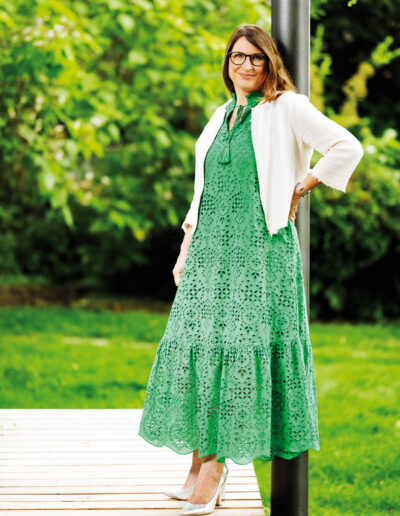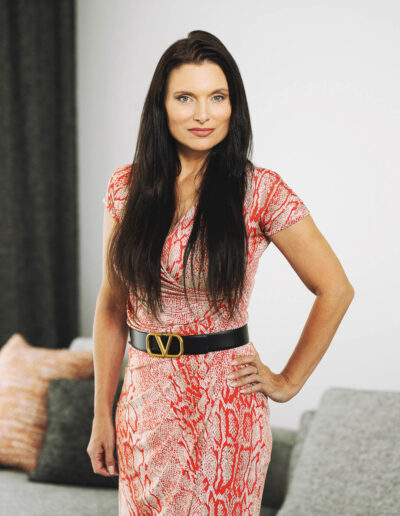What sets her apart is her kindness, her willingness to show vulnerability, and her honesty in admitting that she doesn’t have all the answers. She firmly believes that making mistakes is important, as long as they are not repeated. This is indeed uncommon in a world where the top echelons have long portrayed themselves as smooth and tough. But things and times are changing – and it’s long overdue. So, we openly discuss vulnerability, humanity, but also how to transform a somewhat sleepy company and turn it upside down.

Ladies Drive: C&A has an incredible history of over 180 years – what do you stand for today, in 2023?
Giny Boer: Well it’s still related to the two men, who founded this company Clemens & August. C&A has always been known for a very good qualese plates – reserved parking spaces. Now it’s first come, first served. We traveore dlings. I’m a curious person, I want to learn. I think I know, and I don’t know. And then I know when I know. You know? (Laughter)
Yes, I know exactly what you mean. C&A has an incredible history of over 180 years – what do you stand for today, in 2023?
Well it’s still related to the two men who founded this company, Clemens & August. C&A has always been known for very good quality and affordable prices – value for money. Back then they designed and created a coat or jacket for the men on the tram. In the beginning of the 1900s it was almost a year’s salary for a normal person that you needed to pay for a coat or a winter jacket and then they thought: that can’t be right! And that is how this “value for money” started and that is still who we are today. Quality and affordability is in our DNA.
C&A is an international company with over 1300 point of sales in 17 countries in Europe. For an SME it can be already challenging to produce in a sustainable manner – but I imagine it must be even more challenging if you have an organisation of this size!
Already in the 1980s – C&A had sustainable sources – back then it wasn’t labelled as “sustainable” but it was. So, that’s our legacy. Today we have a sustainability strategy with clear goals – and we keep track of everything we do. You know, as an industry, we need to turn a lot of things upside down. But already today, we offer a large number of items from organic cotton and 99% of our cotton products are from sustainable sources. Should we do more? Of course! But we recently did a survey and asked our customers what they liked about C&A – they told us to be more stylish. So we also need to focus on that, too (smiles).
Do people think C&A is kind of “old-fashioned”?
I like the honesty of our customers (smiles). But we need to continue with our legacy – and then work on being more stylish. It’s important we never forget where we come from.
So how do you make sure that you have sustainable sources?
One thing we did is linked to our product range. We had so many products! But we realised – we have too many. We decided to take out 30%. And that is already done from the 1st of March 2023. So if you think of sustainability, that’s the best thing you can do: to produce less. Then we are really transforming C&A from a push to pull. That’s why we are doing a big digitalisation process because we need data to give a better service to our customer so that we know more about their styles, what they like, but also the quantities we need to buy.
In parallel, we also do even bigger things to transform the fashion industry, together with others. That’s why I’m a board member of the “fashion for good” initiative. The big players meet and think about how do we tackle the big problems together? We meet a lot of start-ups and I’m convinced that they help us to solve specific issues that we have in this industry. But we need this community because we can’t change things all by ourselves.
But sometimes it needs a pacemaker.
Right. Agreed – that’s also why I would like to bring back production to Europe. It is easy? Of course it’s not. We started to produce jeans in a sustainable manner – in Germany. And we’re very successful with it. We invited Levis to see how we do it. But to renew your sourcing strategy – that’s not done in a day.
This race of producing cheaper and cheaper – isn’t that one of the reasons why we exploit human and our natural resources?
Absolutely, but we are not fast fashion and we are not cheap. We are affordable. And I think there is a difference. We should stay affordable, that is the most important thing. And I really believe we should offer long lasting everyday clothes. You and I – we can choose where we want to buy. But a lot of people can’t. Everybody deserves once in a while, a new dress, a new suit. That’s very important to me.
We have done some research. Some of our customers can afford 350 Euro per year to spend on clothes. So if you say, why don’t you pay a 59 Euro for a denim – that’s just too much for them. 20% of the denim sold in Europe is under 30 Euro. You should never forget people with thin wallets.
What do you do regarding recycling?
First of all, it starts with the products, how they are produced. So they should be recyclable. We take back the products and almost nothing goes to waste – it’s only about 3%. Nevertheless, we have a really ambitious Sustainability Strategy 2028 and by 2028, we want to have seven out of 10 products that are recyclable. But I’m with you, what you said before about the pacemaker. You can’t just wait for others. We need to do it.
What did you learn with IKEA that you now kind of copy-pasted to your new job with C&A?
First of all, let me go to the similarities. So why did I choose this job? Home furnishing and fashion have always been my passion. Always. Already when I was young. And I believe it’s good to work with something you really have a passion for because it creates results much easier. Then, what they also have in common, is what I call “working for the many people”. Everybody should deserve a nice table, a nice dress and a suit. Both companies are family owned and for me, and this is key, both companies have a long-term strategy.
Could you work for a Swiss bank, that is listed on the stock market – for instance?
I don’t think they will ever ask me to lead a bank in the first place (smiles)! For me three things are important. Who’s my boss? What do I need to do every day and who do I work with? So if that would really work with a Swiss bank – why not! But anyway, coming back to the original question, so both companies have a lot of things in common – both have a sustainability agenda that is taken super seriously. I was with IKEA for 23 years – one of the values I’ve learned is simplicity. We keep it simple. This is what I try to bring to the whole organisation today.
Does that mean to keep it as lean as possible?
I was not used to all those layers in an organisation. One thing that we already did is to take away the directors’ title, which I really didn’t understand. This layering hinders a culture change. So that’s why I think structure and culture come together. So if you want to be a humanistic customer centric company, you need to stop having all these layers including the titles. It’s a bigger process, I have to admit, because of the country – we are based in Germany. You know, I wasn’t used to having a driver, because at IKEA, nobody has a driver. When we came to parking garage for the first time, I saw all these plates – reserved parking spaces. Now it’s first come, first served. We travel by train. We travel economy class. Probably some symbolic things, but they are important – we do a lot of restructuring, which is linked to the change or transformation of our culture.
This layering hierarchy, the titles and roles – is that a male thing? Because men brought up the company. And men tend to build it in a specific way. That’s neither good or bad. It’s just probably very male. And I observed that women tend to have fewer layers in their companies.
I think you have a point. It is male-ish at least. This way of building an organisation probably had served for a long time a good purpose. And I do believe that IKEA – coming from Scandinavia – is more feminine in general. As a company. This femininity is rooted in their culture and that is why I stayed there for such a long time because I fit in there. I just talked about feeling alone at the top management with someone in the plane to Zurich. I don’t feel lonely at the top – because I have my colleagues around me. This is a question of inclusive culture. Sure, we all have a different role to play and you need to respect for my role and position. But it’s not about hierarchy in the first place. We need to do it together – it takes a village to be successful.
Good point – let’s talk about diversity and inclusion and empowerment of women. How important is that for you as a woman, as a CEO?
I would almost say, as a mum of two daughters. So, for me it’s very important. Women have always been on the agenda, but probably not on the business agenda. So, it was always more stereotyping for being a mum or certain jobs or doing part-time or working till you’ve got children and then staying at home. I think it’s amazing that in 2023, in Europe, in all the modern countries, that we still have an issue with gender equality, because we have a lot of things to deal with at present, of course. I think you have to make a choice – you choose and decide. I have also made a choice and I do and will continue to support a lot of women to have leadership positions.
On our board we have seven people – two men and the rest are women. Our business is a women’s business. Most of our customers are women. Most of our staff are women – but in the middle management we are only 35%. We need to look into that. But I’ve also learned that it’s a myth to think logistics is a male dominated field. I was six years leading IKEA’s supply chain for Holland, Belgium and the UK – with a lot of women. And what I do as well, when I go to search firms, I say: if you only come with men, I send you back – you have to look closer. I need diversity on different levels, not only regarding gender. They always say they can’t find a woman. How’s that? How’s that possible?
Interesting point. The more top managers ask headhunters to look closer, the better the chances for all female talents.
I agree, if they say they didn’t find a woman – that’s really nonsense. But there is another side of the story. I also saw women, super talented, who decided to be a stay at home mum. That’s all perfectly fine. But from my perspective – I lost a lot of talented women. So today I try to keep talented women in my team.
How many times in your career did you have to convince women to stay once they had a baby…?
I think several times. First of all you need to talk. It’s an individual choice, an individual situation. So it’s very difficult to make a one fits all kind of regulation. And then you need to help and listen. How can I make it possible for you? Because I want you to stay. What do we need to do? But it’s not easy, I can tell – I had twins, my husband and myself, we both worked and it was a huge organisation to establish a healthy work life balance. So you need to get organised. I never expected that the company I work for to cover that. I had an au-pair. Did she do everything how I wanted it to be? Nope. But that’s what it is. I had to let it go to a certain extent. But staying home was never a question – and this has one reason: I wanted to be financially independent. It creates freedom. And even though you think, you have the best partner in the world – statistically round about half of the relationships don’t end well. And even if you stay together – life can be hard – health is never guaranteed. So I kept this long-term goal in mind to be financially independent. This is why I always try to keep talented women in my team when they have a baby.
Just speaking of talents – do you have issues getting the best talents?
Yes and no. We get a lot of good talents who mostly want to join the transformation.
When you look at the brand like 10 years ago and you look at it now – also regarding the visuals, the art direction. It’s hard to compare. Can you share a little bit about the keys to a successful transformation?
I started in December 2020 and I had just moved from Spain to Dusseldorf. The first month I could still go to the stores – and then everything was locked down. The only thing I could do is talk to my team. I’ve listened do an enormous amount of people at C&A – on all kinds of levels. After that I made a plan to strengthen the image of C&A through modernisation. Our growth drivers are all about digital online customer centricity. But we’re not only an online player – we have 1400 stores! So we decided to do a facelift and rebrand the stores. Then we have “people and culture” – the most important growth driver in our company! Plus “range & price” – as mentioned – we took out 30% of the product range. We said: when we have 70% right, we will fine tune it. And then we kicked off a huge rebranding process – throughout the company, including the stores, the products, the marketing campaigns.
What was the most difficult part of that transformation process so far?
I think it’s probably the people, the cultural aspect, human resources always matter because you need to unfortunately say goodbye to certain people. That’s another reason why we need more digitalisation and automation. We also need different kind of competencies. That’s never a nice thing to let people go. That’s tough. You don’t like that feeling, but you need to do it – for the sake of the company. But I think the cultural part and the mindset coming from this push: “We buy a lot” to a pull. That is the most difficult thing in culture, in the mindset of your staff, in every little thing you do.
If you look at your career – what was your biggest failure?
It’s like… I am divorced, I was never married…I think everybody around me saw that the relationship was not healthy and I just had my two daughters, they’re twins. I don’t know if it’s a failure, but it felt like a failure because they were not even one year old and then I was alone as a mum. So it was super hard to handle the situation as a mother, but also as an employee who needed the job and wanted to stay financially independent. So it was a lot of hard work, it was a sacrifice. It’s a choice. We moved a lot due to my job at IKEA – and there were very difficult situations I had to face. But I pulled through. Today I know how to handle change. But to learn all of this…that was hard.
We create our own wisdom through experience, I guess. Where do you turn to if things go south?
It’s probably my heart. I usually use three types of intelligences. First my gut feeling which is very important for me. I think it’s important to acknowledge that. So first there is a feeling – and then there is the thinking, the analysis, the data, the knowledge. I challenge what I feel. And then I take a decision with my heart. If it doesn’t feel right, I don’t do it. I trust my intuition. My intuition is stronger than the feeling…you can call it wisdom or…
…intuition is kind of our innate artificial intelligence. That’s what I’ve learned from my husband who’s an incredible bright mind and old soul.
I think we shouldn’t ignore our intuition. We learn so much in our life – but what do we feel? I have never denied my feelings. I’m a curious person, I want to learn. I think I know, and I don’t know. And then I know when I know. You know? (Laughter)
Yes, I know exactly what you mean.
I know when my heart tells me: this is it!

